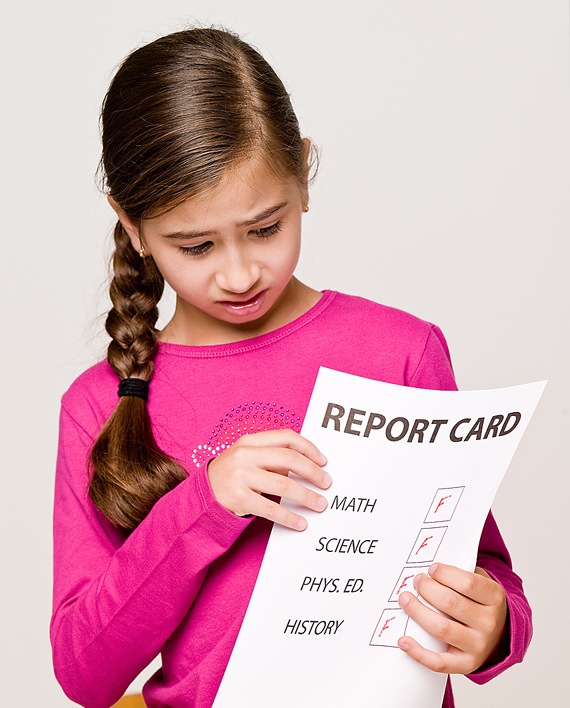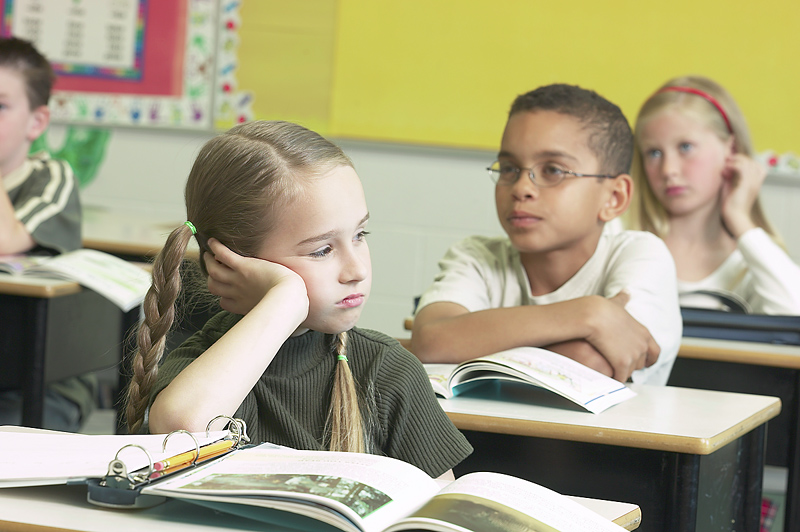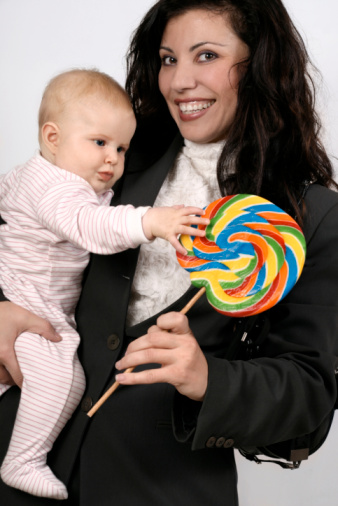Stay Informed
Popular Articles
- Hiatal Hernia: Hidden Cause of Chronic Illness
- Small Intestinal Bacterial Overgrowth (SIBO)
- Applied Lymphology: Unlocking the Secret to Pain Relief
- An Introduction to Constitutional Iridology
- The Low Down on Liver Detoxification
- An Energetic and Emotional Approach to Cancer
- Fat Facts
- Marrow in the Bones
- Blood Type and Nutrition
- Cardiac Herbs: Beyond Hawthorn
Quick Search
The School of Modern Herbal Medicine




Let’s Stop Drugging Our Children
- 8/10/2015
- Categorized in: Specific Health Problems
Common Sense About Drugs, ADHD and Other Learning Problems
 Most people would agree that America’s children are not drug deficient. As evidence of this, nearly seven million American children have been subjectively diagnosed with Attention-Deficient Hyperactive Disorder (ADHD), and roughly 60% of those children are taking Ritalin, Adderall, and other psychostimulant drugs.
Most people would agree that America’s children are not drug deficient. As evidence of this, nearly seven million American children have been subjectively diagnosed with Attention-Deficient Hyperactive Disorder (ADHD), and roughly 60% of those children are taking Ritalin, Adderall, and other psychostimulant drugs.
A 2014 report by the National Center for Health Statistics indicates that 7.5% of all American children between 6-17 years of age used prescription meds during the past 6 months for emotional or behavioral difficulties—a 500% increase from the period 1988-1994. Sadly, about half of these children and their parents report that the drugs are not helping. In fact, they sometimes make things worse.
“Those are astronomical numbers—I’m floored,” exclaimed Dr. William Graf, pediatric neurologist in New Haven and professor of pediatrics, neurology, and nursing at the Yale School of Medicine, to the New York Times. “Mild symptoms are being diagnosed so readily, which goes well beyond the disorder and beyond the zone of ambiguity to pure enhancement of children who are otherwise healthy.” Worse yet, about 10,000 toddlers are being medicated with psychotropic drugs for behavioral problems, according to a report by the Centers for Disease Control and Prevention (CDC).
There may also be a sinister aspect to this situation. According to an investigation by Colorado mental health authorities, the findings of which were reported in the Denver Post, “High rates of psychotropic drug use among poor and foster children did not occur by mistake. Court documents filed in health care false-claims lawsuits show that drug companies closely tracked the prescribing habits of doctors in the Medicaid program, which pays the health care of the poor, including foster children.”
What Are We Doing?
Any compassionate and caring person has to wonder, “What happens to these kids after being on these drugs for several years? How do Ritalin, Adderall and other drugs really affect their mental, emotional and physical development? What passions and interests might have shaped their future had they not been medicated? Will they become lifelong addicts and develop other serious problems?”
According to Dr. Jerome Groopman, professor of medicine at Harvard Medical School, “There’s a tremendous push where if the kid’s behavior is thought to be “abnormal”—if they’re not sitting quietly at their desk—that’s pathological instead of just childhood.” How did this situation get so out of control?
Several factors appear to be driving this dependence on Ritalin and other drugs for ADHD. Many parents are too busy to provide a healthy home environment, and counselors are generally too busy to provide therapy for emotionally troubled children. Most schools are unwilling to provide recess and other activities for fidgety boys, and pharmaceutical companies are eager to boost sales and profits.
There is, however, another important contributing factor. Surprisingly, there are no uniform biomarkers for diagnosing ADHD, which leads to over-diagnosis. According to Tom Insel, M.D. and director of the National Institute of Mental Health, “Subjective diagnosis invites unnecessary treatment and over-medication.” He continues, “Absent these kinds of consistent, objective measures for mental disorders, we cannot distinguish between a true increase in the number of children affected or simply changing values or trends in diagnosis. What one parent might consider hyperactivity, another parent might consider healthy exuberance. What physicians once called attention deficit hyperactivity disorder (ADHD), often now elicits a diagnosis of childhood bipolar disorder, leading to a 40-fold increase in prevalence from 1994-1995 to 2002-2003.”
Children required to take drugs for ADHD often suffer side effects worse than the condition itself. These "meds" actually rival illegal street drugs in terms of their risks to health, which include permanent brain damage, changes in personality, depression, hallucinations, cardio toxicity and liver damage, heart attack and stroke, cancer, and sudden death or suicide.
Mixed Messages
 Against this backdrop, think about the mixed messages our children are being given. On the one hand, government and health officials warn kids about the dangers of drugs like meth, heroin, and cocaine. They tell them that drugs are a cop-out, an escape from having to deal with personal problems and the realities of life. And, of course, they warn kids that drugs are addictive and will destroy both their health and their lives. But then they contradict themselves by endorsing prescription drugs as a solution to emotional problems, learning difficulties, and behavioral issues. Feeling depressed? Take a drug. Feeling anxious? Take a drug. Having problems in school? Take a drug!
Against this backdrop, think about the mixed messages our children are being given. On the one hand, government and health officials warn kids about the dangers of drugs like meth, heroin, and cocaine. They tell them that drugs are a cop-out, an escape from having to deal with personal problems and the realities of life. And, of course, they warn kids that drugs are addictive and will destroy both their health and their lives. But then they contradict themselves by endorsing prescription drugs as a solution to emotional problems, learning difficulties, and behavioral issues. Feeling depressed? Take a drug. Feeling anxious? Take a drug. Having problems in school? Take a drug!
In this article, we challenge the assertion that mood-altering drugs are correcting a biochemical imbalance in America’s children. We also discuss why trying to solve children’s mood and behavioral problems with drugs is not much different than people using illegal street drugs to try to solve their problems.
We want to do more than speak out against these drugs, however. We want to offer viable solutions to correct the real causes of the behavioral problems collectively labeled as ADHD.
Is ADHD a Biochemical Imbalance?
Let’s start by looking at the assertion that ADHD is a chemical imbalance. If a person has Type I diabetes, they definitely have a biochemical imbalance because objective medical testing can show that they are low in insulin. There is also a way to measure their blood sugar levels to determine how much insulin is needed. If a disorder is really biochemical, we ought to be able to objectively measure the imbalance and monitor the results from the medication being used.
 Contrast this with someone using cocaine. People take cocaine because it’s a stimulant, or an “upper.” It temporarily energizes them and enhances their mood. The drug may make them feel better temporarily, but it doesn’t fix an imbalance in their body chemistry. We can’t test someone for cocaine deficiency and then monitor their blood work and objectively document their systemic imbalance because there is no such thing as a cocaine deficiency.
Contrast this with someone using cocaine. People take cocaine because it’s a stimulant, or an “upper.” It temporarily energizes them and enhances their mood. The drug may make them feel better temporarily, but it doesn’t fix an imbalance in their body chemistry. We can’t test someone for cocaine deficiency and then monitor their blood work and objectively document their systemic imbalance because there is no such thing as a cocaine deficiency.
Cocaine is an amphetamine, a class of drugs that mimic the action of the neurotransmitters epinephrine and norepinephrine in the sympathetic nervous system. By stimulating the sympathetic nervous system, amphetamines jack up a person’s metabolism. Amphetamines, like cocaine, can have serious consequences, including addiction, nervousness, loss of appetite, allergic reactions, mood problems (aggression, anxiety, depression, hostility, etc.), hallucinations, weight loss, and tachycardia.
The drug most commonly used to treat ADHD, methylphenidate (Ritalin®), is an amphetamine. It may be an even stronger stimulant than cocaine, which is why one of its nicknames is “kiddy cocaine.” This raises a question. Does the nature of how a substance behaves in the body change just because some “expert” recommends it? What is the difference between trying to “fix” a restless child with amphetamines and people trying to “fix” themselves with a similar substance?
To make this point perfectly clear, consider that high doses of methylphenidate often produce agitation, tremors, euphoria, tachycardia, palpitations and hypertension. Like cocaine and other illegal “uppers,” “kiddy cocaine” can also produce psychotic episodes and paranoid delusions. Psychotic episodes, bizarre mannerisms, violent behavior, suicide and even death can result from the use of cocaine, methylphenidate, and other stimulant drugs.
Why Mood-Altering Drugs Aren’t the Answer
 To understand why these drugs really don’t correct the biochemical “imbalance” they are prescribed for, it is necessary to understand how the nervous system functions. Nerve cells produce chemical messengers called neurotransmitters that communicate information to other cells. When things aren’t right in the body, these chemical messengers alert the system that something is wrong. These signals may manifest as pain, anxiety, depression, restlessness, irritability, or other bad feelings.
To understand why these drugs really don’t correct the biochemical “imbalance” they are prescribed for, it is necessary to understand how the nervous system functions. Nerve cells produce chemical messengers called neurotransmitters that communicate information to other cells. When things aren’t right in the body, these chemical messengers alert the system that something is wrong. These signals may manifest as pain, anxiety, depression, restlessness, irritability, or other bad feelings.
When a person examines their life and makes healthy changes to correct various problems, the body sends different chemical messages. These signals manifest as pleasure, joy, peace, happiness, excitement and other positive feelings. These tell us that the problem has been fixed and everything is all right.
Mood altering drugs mimic the body’s chemical messengers. When ingested, they override the body’s own signals, replacing them with a temporary “everything’s all right” message. Pain is replaced with numbness, and bad feelings are replaced by stimulation or a sense of euphoria.
However, this relief is not real because the actual problems the body is experiencing haven’t been resolved. They’ve only been masked. Once the drug wears off, the nerves go back to trying to tell you something is wrong, and they may try to do so more emphatically, resulting in even greater physical or emotional discomfort. If the person continues to use the drug to mask these messages, then a cycle of addiction begins. This is why trying to fix mental and emotional problems with drugs is generally a bad idea.
Why the Diagnosis of ADHD is a Farce
As we have shown, using drugs to resolve emotional and behavioral problems is generally counterproductive, but it goes deeper than this. The fact is that ADHD is not a “disease” that can be proven by any objective criteria. It was literally voted into existence in 1987 by the American Psychiatric Association. As previously alluded to, the criteria for diagnosing ADHD are completely subjective and fail to acknowledge other causes. A list of 18 behaviors was produced, and if a teacher, school nurse or parent decides that a child has enough of these behaviors, they are labeled as having ADHD. These 18 behaviors are as follows:
• Often fails to give close attention to details or makes careless mistakes in schoolwork, work, or other activities
• Often has difficulty sustaining attention in tasks or play activities
• Often does not seem to listen when spoken to directly
• Often leaves seat in classroom or in other situations in which remaining seated is expected
• Often has difficulty playing or engaging in leisure activities quietly
• Often does not follow through on instructions and fails to finish schoolwork, chores, or duties in the workplace (not due to oppositional behavior or failure to understand instructions)
• Often has difficulty organizing tasks and activities
• Often avoids, dislikes, or is reluctant to engage in tasks that require sustained mental effort (such as schoolwork or homework)
• Often loses things necessary for tasks or activities (e.g., toys, school assignments, pencils, books or tools)
• Is often easily distracted by extraneous stimuli) is often forgetful in daily activities
• Often fidgets with hands or feet or squirms in seat
• Often runs about or climbs excessively in situations in which it is inappropriate (in adolescents or adults, may be limited to subjective feelings of restlessness)
• Is often “on the go” or often acts as if “driven by a motor”
• Often talks excessively and acts impulsively
• Often blurts out answers before questions have been completed
• Often has difficulty awaiting turn
• Often interrupts or intrudes on others (e.g., butts into conversations or games)
 Can you see how ridiculous some of these "diagnostic criteria" are? Children and teens can exhibit these types of behaviors for a variety of reasons unrelated to ADHD. Highly intelligent children may exhibit these behaviors because they find school boring. Other children may be having problems at home, including suffering abuse. Children may also be suffering from hypoglycemia, irritation to the nerves due to heavy metal and environmental toxins, stress, or nutritional deficiencies. The behaviors listed above could even result from poor parenting or poor teaching.
Can you see how ridiculous some of these "diagnostic criteria" are? Children and teens can exhibit these types of behaviors for a variety of reasons unrelated to ADHD. Highly intelligent children may exhibit these behaviors because they find school boring. Other children may be having problems at home, including suffering abuse. Children may also be suffering from hypoglycemia, irritation to the nerves due to heavy metal and environmental toxins, stress, or nutritional deficiencies. The behaviors listed above could even result from poor parenting or poor teaching.
Unfortunately, instead of taking the time and effort to figure out what we can do to help these children solve their real problems, our schools and the medical profession are simply taking a short cut. Just pop a pill and hope for the best! It’s easy to see why children placed on drugs for behavioral and emotional issues are more likely to use “recreational” drugs. The message is pretty clear, “Pills can solve your problems!”
Schools, Social Pressure and ADHD
What makes this situation even more tragic is that ADHD is often “diagnosed” by schoolteachers—people who have no formal training in psychiatry or medicine. All they have to do is compile a list of the negative behaviors a child is exhibiting in school and label the child as ADHD. Then, school administrators put pressure on parents to medicate their kids. In some cases, if parents don’t comply, school officials have called child protective services and had parents charged with neglect.
This is done in spite of the fact that no studies have proven positive, long-term effects from the use of these medications. In other words, studies have not measured improvements in learning, academic performance or social behavior from using drugs to “manage” children in school. Are there better solutions? Absolutely.
Natural Solutions for ADHD
If drugs aren’t the answer to the behavioral and learning problems children have at school, what is? The answer is multifaceted because there are many factors involved. Here are some of the important ones to consider.
Positive Attention and Loving Discipline
 For starters, children and teens need attention. Experts in parenting know that if children can’t get attention in positive ways, they’ll get it by acting out in negative ways. In a child’s mind, negative attention is perceived as better than no attention at all.
For starters, children and teens need attention. Experts in parenting know that if children can’t get attention in positive ways, they’ll get it by acting out in negative ways. In a child’s mind, negative attention is perceived as better than no attention at all.
In today’s society, both parents usually work, schools are overcrowded, and electronic baby-sitters such as TV, video games, and social media have replaced reading, physical activity, and quality time with parents. As a result, many of today’s youth are literally starved for meaningful attention. Furthermore, electronic baby-sitters are well known for reducing attention span. Research has also shown that children have an easier time in school when they have parents who actually spend time playing with them, reading to them, and otherwise interacting with them. Children need loving guidance, and in some cases that’s the only thing they need.
Of course there are children who receive sufficient attention and loving guidance from parents yet still exhibit emotional and behavioral problems. In these cases, what could be the problem?
Junk Food Diets = Junk Food Brains
 It’s no secret that most Americans eat poorly—and so do their children. There is ample evidence that a junk food diet contributes to reduced mental function, difficulty concentrating, and behavioral problems. An increase in hyperactivity, juvenile delinquency and even criminal behavior has been associated with diets high in refined carbohydrates and food additives.
It’s no secret that most Americans eat poorly—and so do their children. There is ample evidence that a junk food diet contributes to reduced mental function, difficulty concentrating, and behavioral problems. An increase in hyperactivity, juvenile delinquency and even criminal behavior has been associated with diets high in refined carbohydrates and food additives.
Most of today’s kids are practically raised on sugar and refined grains. High levels of simple carbohydrates in the diet cause rapid spikes in blood sugar, which cause nervousness and agitation by over stimulating the brain and upsetting neurotransmitter balance. This is compounded by the fact that many kids are becoming addicted to caffeine at a very early age. Caffeine dehydrates the brain and depletes energy reserves in the nervous system, thereby contributing to restlessness, irritability and difficulty concentrating.
Many parents are shocked to discover how much calmer their kids are when they aren’t fed refined sugars, simple carbohydrates, and caffeine. Consequently, many of them try to take their children off these foods, although they have a hard time abstaining themselves.
To help kids (and yourself) make these changes, start by trying a “junk food” fast. Refrain from these foods for a period of at least three to four days and preferably a whole week. Then, as a reward, let yourself “pig out” on junk food and observe the almost immediate psychological and behavioral changes. Then point these out to your kids and help them understand that these foods are harming their mental and physical health.
It’s also helpful to offer healthy substitutes. Try using whole grains instead of refined flour and white rice, and use natural sugars like honey or freeze-dried sugar cane juice to make natural treats. This can help you transition away from the bad to the good.
Licorice root along with Spirulina and Blue-Green algae (like NSP's Super Algae blend) are great supplements to help neutralize sugar cravings. They balance blood sugar levels when taken in the morning, again at lunch, and once more when kids come home from school.
Kids Need Good Fats
Good fats are absolutely critical to brain function, since the brain is 50% fat by dry weight. Most good fats contain Omega-3 fatty acids, which many modern diets fail to provide. Many parents have found that giving their children healthy fats like butter and olive oil helps them learn better. In choosing an Omega-3 supplement, remember that DHA is the most important fatty acid for brain function. Young children usually love naturally fatty foods because their developing brains need them. Fish liver oil supplements are often very helpful for children with learning problems. DHA is also available as a supplement. It also helps to incorporate foods with good fats into their diet, including nuts, avocados, and coconut oil.
Brain-Building Protein
 The neurotransmitters that allow nerve cells to “talk” to each other are made from amino acids, the building blocks of protein. Many children with learning problems aren’t getting enough protein, particularly for breakfast. Research shows that children who have high protein foods for breakfast perform better in school than kids who skip breakfast. Children who eat sugar sweetened breakfast cereals (especially with low fat milk) do the worst.
The neurotransmitters that allow nerve cells to “talk” to each other are made from amino acids, the building blocks of protein. Many children with learning problems aren’t getting enough protein, particularly for breakfast. Research shows that children who have high protein foods for breakfast perform better in school than kids who skip breakfast. Children who eat sugar sweetened breakfast cereals (especially with low fat milk) do the worst.
Unless there are allergies, eggs are a very good breakfast food. They contain protein and good fats, especially fat soluble vitaimins, especially if cooked over low heat with butter. Some ADHD children actually do well with red meat for breakfast—steak, hamburger and even a high quality organic bacon or sausage.
If you’re too rushed to prepare a healthy breakfast for your children, at least make them a high protein smoothie, using a high quality protein powder or meal replacement formula. You can add fresh or frozen fruit, organic, whole milk, or whole milk yogurt to make the smoothie more nutritious. As alluded to earlier, Blue-Green algae is a good source of amino acids and helps balance brain function as well as blood sugar.
Other Supplements to Enhance Learning
Like adults, children can experience high levels of stress. If a child has enlarged pupils and seems anxious or nervous, he or she could probably use a Relaxing Nervine Formula (refer to our book Modern Herbal Medicine for a complete list) to relax. A formula containing B-complex vitamins, vitamin C, and an adaptogenic herb can help children and adults to feel more relaxed and focused.
If a child has small pupils and seems to calm down when given stimulants, they are parasympathetic dominant and the previous remedies will tend to make them more agitated. In this case, give them more iodine to stimulate the thyroid in the form of liquid Dulse. You can also give them a Brain Calming Formula (refer to our book Modern Herbal Medicine for a complete list) to enhance the neurotransmitters responsible for memory and attention like norepinephrine and acetylcholine. (For more detailed information on this subject read my article: Back to School Shouldn't Mean Back to Ritalin)
These are not the only issues that can cause children to have problems learning. Heavy metals can damage the nervous system and interfere with normal biological functioning. Fortunately, there are cleansing techniques and supplements that can purge heavy metals from the body. (See Kids, High Fructose Corn Syrup and Mercury Toxicity)
Leaky gut syndrome can also be a factor in emotional and behavioral problems in children. Read our article Small Intestinal Bacterial Overgrowth or take our webinar class on Leaky Gut and SIBO for information on how to deal with this problem.
Additional Help and Information
For more information about helping children with learning problems using natural methods, consult these other sources:
Modern Herbal Medicine by Steven Horne and Thomas Easley
The Comprehensive Guide to Nature’s Sunshine Products by Steven Horne and Kimberly Balas
